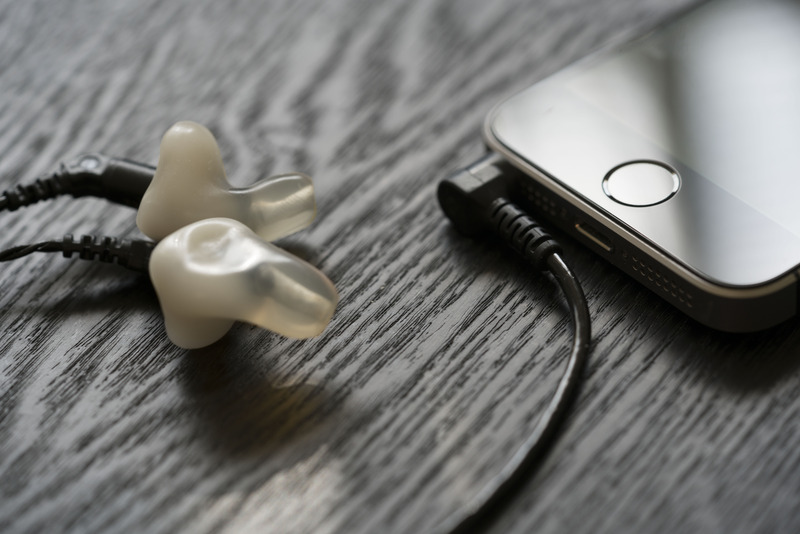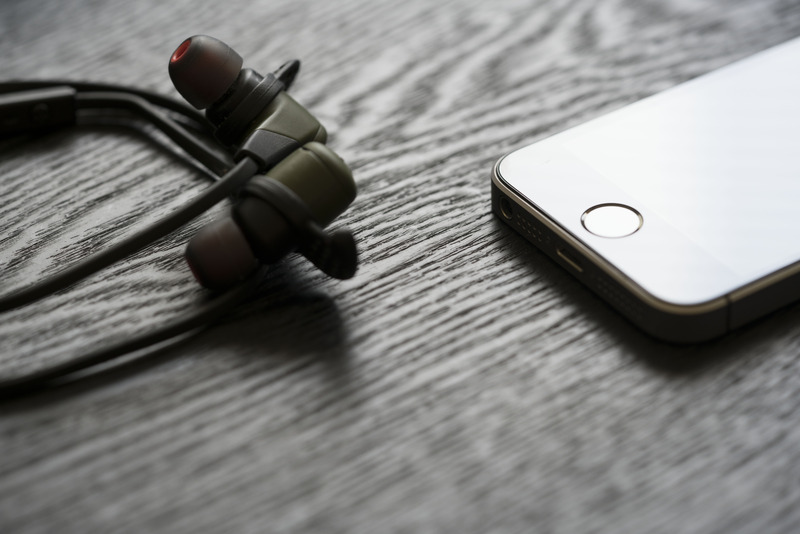When Phil Schiller took the stage at the Bill Graham Civic Auditorium, he had a difficult job ahead of him. Apple had just announced its new iPhone 7 line and he was tasked with defending one of the company’s most controversial design decisions in over a decade. Since the very first iPhone in 2007, Apple had built a standard headphone jack into every model of their wildly popular smartphone. The rumors had been flying for almost a year that they had decided to remove this ubiquitous port and the anger was palpable. The rumors, this time, were spot on.
Schiller’s defense came in waves. First, he reassured the audience that an adapter for existing headphones would be included with every iPhone 7 shipped. Then he moved on to address the issue directly:“Now some people have asked why we would remove the analogue headphone jack from the iPhone. I mean it’s been with us a really long time. I’m sure you know that the source of the mini-phono jack is over a hundred years old used to quickly exchange in switch boards. Well the reason to move on-I’m going to give you three of them, but it really comes down to one word: Courage. The courage to move on and do something new that betters all of us. And our team has tremendous courage.”
The courage line was mocked mercilessly in the media for weeks to come. Despite the sincerity of its delivery, Schiller's spirited defense came across as hyperbolic at best and out-of-touch with reality at worst, but it got me thinking. According to Aristotle, courage, like all virtues, lies in between two extremes. At the one end of the spectrum is brashness (thrasus), and on the other end, fear (phobos). The courageous person knows when it is appropriate to be bold and when it is appropriate to be afraid. Does removing the headphone jack from the iPhone qualify as courage or is it an instance of brashness? I think the answer to that question depends largely on how successful Apple is in realizing its vision for wireless audio and the AirPods are their first articulation of this vision.
The Problem of Wireless

If we were to think about headphones knowing nothing about their real-world constraints, I think we would obviously prefer them to be wireless. In other words, the idea of having independent objects that we place in our ears is obviously preferable, all things being equal, to having these objects in our ears tethered by wires to our devices. This idea is so compelling that a robust market for bluetooth headphones that do away with the wire that connects the earphones to the device, but keeps the wire between the earphones, exists.

Why doesn’t everyone use bluetooth headphones given the obvious appeal of fewer wires? Setting aside the unavoidable issue of price, I think it comes down to the following four issues:
First, you need to pair the bluetooth headphones to your device in a frustratingly laborious process that is far less user-friendly or reliable than the simple act of sticking a connector into a headphone jack. Second, as a result of bluetooth headphones’ reliance on a wireless connection, the sound will from time to time drop out while you are listening. This is a problem that afflicts some sets worse than others, but none are immune. Third, in order to maintain as consistent a connection as possible, bluetooth audio is compressed and this negatively impacts the way the audio sounds. Finally, wireless headphones rely on batteries to work which means that you have yet another device to worry about charging.
My question when I first got my hands on the AirPods was simple. How many of these problems has Apple managed to solve?
Pairing

When it comes to pairing, the AirPods are really great. Hold the charging case near a device running iOS 10 or later, flip open the lid and tap connect. It’s easier than plugging a connector into a headphone jack and the cherry on top is that it then automatically pairs to any Apple device logged into the same iCloud account. This is Apple at its finest. They took an awful, clunky process and made it delightful and easy.
Reliability
To address the issue of reliability, Apple developed an in-house chip called the W1. This chip is Apple’s hardware answer to the performance problems that have plagued bluetooth since its inception. I’m happy to report that it’s another home run. The AirPods are easily the most reliable bluetooth headphones I have ever used. On occasion, I do hear a tiny echo as the individual earbuds sync and they are still not as rock solid as wired headphones, but I’d say that they are 98% of the way to the reliability of wired headphones. And they have very good range on top of that. I have to get roughly 80 feet away from my phone before the signal starts to cut out.
Sound Quality
The sound quality of the AirPods is adequate. They don’t sound great and they don’t sound terrible. They’re just okay with Apple's signature emphasis on mids and neither the highs nor the lows getting much love. I’ve listened to bluetooth headphones that sound better and I’ve listened to bluetooth headphones that sound worse. Whatever hardware magic is happening with the W1 chip, it is obvious that these are bluetooth headphones that sacrifice quality for reliability. If most of your listening time is devoted to music, there are better options out there. For podcasts and audiobooks, however, the AirPods are perfectly serviceable.
The Charging Case
The charging case, which is roughly the size and shape of a container of dental floss, is a very elegant solution to three separate problems. The first, as I’ve already mentioned, is the pairing process. Flip open the case, and you’re ready to go. The second is the problem of losing something as small as an individual AirPod. When you take them out of your ears, you are encouraged to place them in the case by the clever way in which the magnets to suck them into position. It’s just plain fun to do and it’s much easier to keep track of the case than the individual earbuds. The third problem that the case solves is battery life. The AirPods are tiny and together they can give you up to 5 hours of playback. But when you put them back in the case, they recharge. With a fully charged set of AirPods and charging case, you get a combined total of 24 hours of battery life. This mitigates the need to constantly have the headphones plugged in when they’re not in use and has made battery life a non-issue for me.
Fit and Comfort
I find the AirPods to be extremely comfortable. Your milage will vary on this as everyone has differently shaped ears and I really wish Apple had avoided a one-size-fits-all approach here. The AirPods are Apple’s second wearable computer. How cool would it have been if they had set up audiology stations much like the Apple Watch stations at every Apple Store where you could get custom-molded tips for the AirPods? On the other hand, the fact that the AirPods don’t really create any kind of seal with your ear canal, means that you have more situational awareness when walking around in the world. This makes them great for walking outside in urban areas, although they don’t read socially like headphones, so you’ll notice people trying to talk to you when they’re in. The AirPods are now my workout headphones and unlike their wired brethren, they have never fallen out of my ears during a workout. They have also very quickly become my new favorite way to take long phone calls, thanks to some noise-cancelling magic that they are able to pull off with the two microphones.
New Problems
While the AirPods seem to have solved quite a few of the issues that have plagued bluetooth headphones, they have also introduced a new category of problem. In order to make them so small, Apple was either unwilling or unable to put basic physical controls on the earbuds. Instead, they chose to rely on a combination of gestures and Siri to get the job done. Removing an AirPod from your ear will pause playback and putting it back in will resume playback. This is a clever idea that works well when you’re out shopping and you want to interact with a salesperson. For volume control, you need to double tap on one of the AirPods to invoke Siri and say “Volume Up” or “Volume Down”. I find this to be the weakest part of the AirPods experience. First of all, the gesture isn’t reliable enough for something as basic as volume control. Second, double tapping on the AirPod generates discomfort. But worst of all, you are forced to interrupt whatever it is you’re listening to every time you want to change the volume. A workaround for these new problems is to use the Apple Watch to control playback and volume, which is what I do, but even this is an inferior experience to the physical buttons that all other bluetooth headsets offer. Not to mention that those who don’t sport an Apple Watch are out of luck.
Wrap Up
As a first articulation of Apple’s vision for wireless audio, the AirPods are a remarkable achievement. The tech giant has managed, once again, to solve a whole series of existing technological problems in a mostly elegant way that materially improves the user experience. Many of these benefits can only be enjoyed when the AirPods are used in conjunction with other Apple products, but the improved reliability gains of the W1 chip extend to any device that supports bluetooth. These headphones are not for audiophiles. If sound quality is your number one priority, I'd still recommend that you look at a set of wired headphones. But the convenience factor of the AirPods proposition is so compelling that I find myself using them for everything but serious music listening and audio/video work. I think it’s too early to judge whether Apple’s removal of the headphone jack from the iPhone was courage or brashness, but overall, the AirPods are a strong supporting argument for it being the former rather than the latter.




